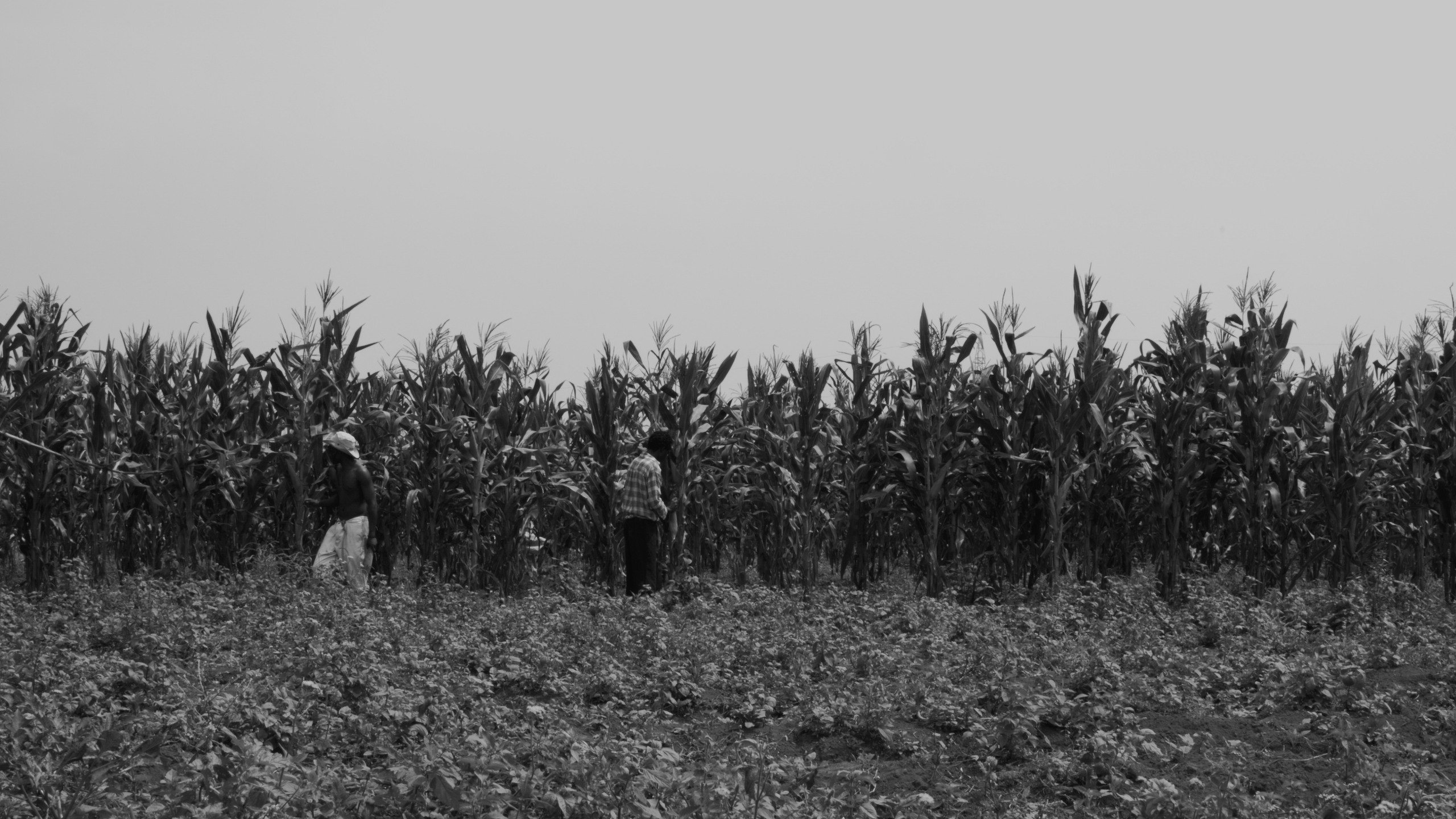Nsala was created as part of the Manhindule residency in the Yole!Africa centre. The film combines archive footage and sequences of a couple working in a mine filmed today. What where the context and genesis for this project?
Nsala was born as part of the Manhindule residency organized by the Yole!Africa center in Goma. The theme of this residency was “trans-form”, and its goal was to question colonial history in Congo, with the aesthetic and texture of archive. I chose to work around historic documents from the Katanga region mines, and contemporary observations. The presence of artisan or industrial mines is so massive in our daily lives that they end up becoming invisible. So the film is an attempt at making this continuity visible, at showing that unresolved historical layers run through what we call “the present”.
The footage filmed today performs the colonial past in the form of a “reenactment” while introducing the idea of a historic continuity. Could you comment on this dimension of the film?
The sequences filmed today are in fact thought as a form of reenactment, of course, but in a subtle way: it is not necessarily about reproducing accurately, but rather about reactivating a memory through the body, the gesture, but also the location—resonating with images of the past. This friction between the two temporalities allows, I hope, to make sensible the idea that colonial violence never truly stopped, that it just changed forms. The past survives in the rhythms of work, in the postures and exhaustion of the bodies.
Beyond the back and forth between past and present, you offer a modification of the rhythms of the bodies through slight accelerations. Why did you make this choice?
The slight accelerations, almost invisible, are a way to disrupt the linearity of cinematic time. By subtly modifying the speed of the bodies, I try to create a strangeness, a slight discord between what we feel and what we see. It is also a way to emphasize that working in the mine produces a distortion of lived time: days look alike, gestures get repeated, the body dissociates. This discrepancy increases the spectral aspect of the film.
The archive is sourced from the Royal Museum for Central Africa. What is this background and how was the choice of this specific footage made?
The archive used is sourced from the Royal Museum for Central Africa in Tervuren, in Belgium, made available for the residency. The choice was made through visual affinity and thematic resonance with “trans-form”: I selected the images where bodies are observed, classified, put to work. Images which despite seeming neutral, give off a will for control. I wanted to divert this archive, not to illustrate it, but to expose its mechanisms and consequences.
Why choose to make a silent film, without words or comments?
The choice to not include any words or comments was became obvious really early on. To me, it was about creating a space where the audience could project their own feelings. Word would risk locking the meaning, reducing the footage to a speech.
The film’s score is precise and minimalist, the silence gives turn to isolated sounds present in the forefront. In which direction did you draw it up?
The score was conceived as a very thin, almost fragile sound fabric. I worked from concrete sounds captured on today’s locations: sounds of rocks, of pickaxes, of breathing, of friction. These sounds are mixed in order to be at times barely audible, and suddenly very present. It is about making the effort, the tension, but also the hanging moments—heard. The absence of music increases this attention to sound details. I wanted every sound to become an event in and of itself.
Interview by Louise Martin Papasian
